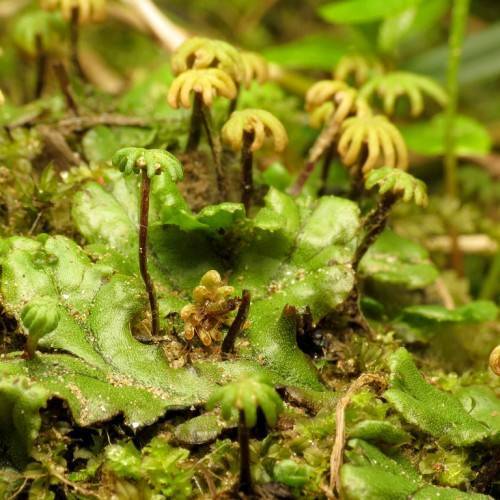
thalloid liverwort
Marchantia polymorpha
Also Known As - lung liverwortCycle:
Perennial
Watering:
Average
Hardiness Zone:
11
Flowers:
Flowers In Spring
Sun:
part sun/part shade
Soil:
Acidic, Well-drained
Fruits:
Fruits Ready In
Leaf:
Yes
Growth Rate:
Moderate
Maintenance:
Moderate
Tropical:
Yes
Indoors:
Yes
watering
Prayer plants need to be kept moist without water-logging the soil. Aim for moist soil (not wet) and try to water your plant once a week, when the top inch of soil is dry. Reduce the frequency of watering during the winter when the plant is dormant. If you find that the leaves are curling, you may need to water it more. If the leaves are wilting and turning yellow, you may need to reduce watering frequency.
sunlight
Prayer plant requires bright indirect sunlight for at least 4-6 hours a day. This can be from a south or east-facing window, if available. If the natural light is not sufficient, you may supplement with an artificial light source such as an LED grow light that is within 10 inches of the plant. During the summer months, you may need to reposition the plant further away from the light source to prevent scorch or burned leaves. Protect your prayer plant from direct, hot sunlight to prevent sunburn and leaf discoloration.
pruning
Prayer plant (Maranta leuconeura var. kerchoviana) should be pruned once every 3-4 months during the growing season (March to September). Pruning should be done carefully, as too much might damage the plant. Depending on how much of the plant you want to keep, pruning should involve removing no more than 1-third of the plant’s foliage. This can be done by snipping off the tips of the foliage or by removing whole leaves. This will help promote bushier growth and more vibrant foliage. Additionally, removing any yellowing or browning leaves can help keep the prayer plant looking lush and healthy.
